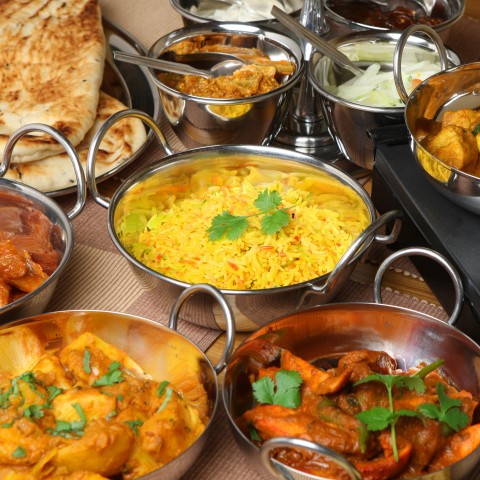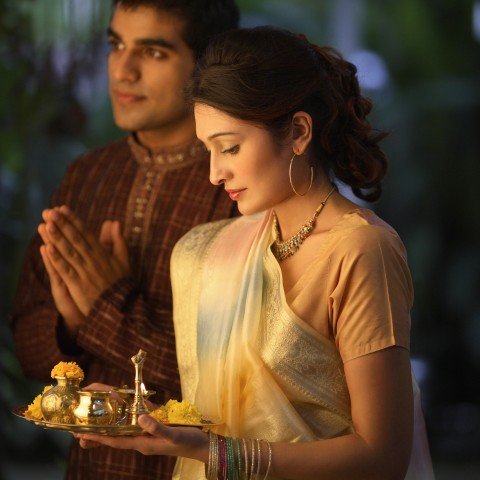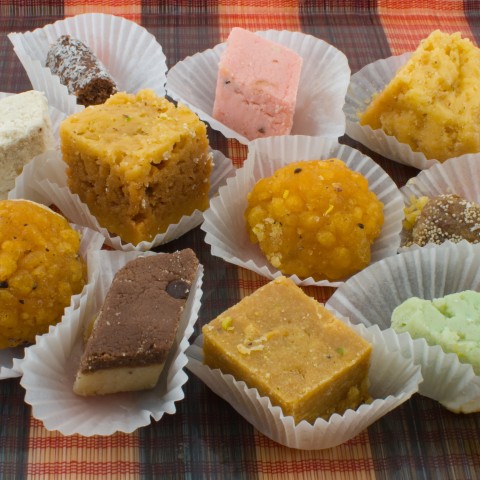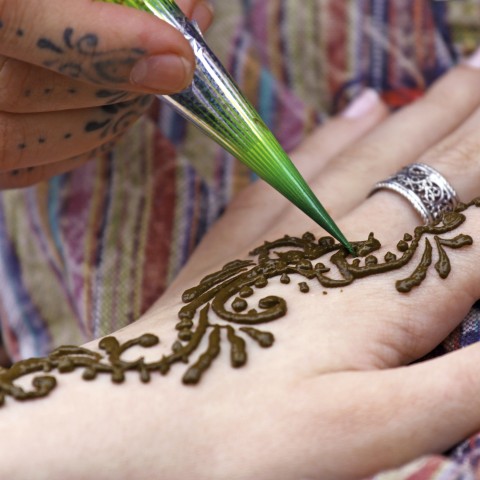Practically, Indian etiquette is a fairly extensive term. It’s the amalgamation of Indian manners, as well as Indian culture, customs, and etiquette that blesses India with its uniqueness in the world.
Being a foreigner, you’ll clearly observe a distinctness in everything: cultural etiquette in India (such as Indian wedding etiquette), business etiquette in India, etc.
Honestly, one may compare India to a sponge, absorbing the richness from everywhere. And when you try to squelch its aura, it gives the same profuseness of hospitality and welcomeness.
This article focuses on existing Indian manners and customs that are popular in various aspects of life. You’ll learn some basic, but profoundly important and helpful, day-to-day practices of India: Language, culture, customs, and etiquette, such as business etiquette tips, dress etiquette, table etiquette in India, and much more.
Table of Contents
- But Why is Practicing Etiquette in India so Important?
- Etiquette in Hindi
- Basic Do’s and Don’ts for Addressing to Someone in India
- Dining Etiquette in India: Do’s and Don’ts for Dining
- Tourist Etiquette in India: Do’s and Don’ts for Sightseeing
- Do’s and Don’ts for Greetings
- Do’s and Don’ts for Visiting a House
- Travel Etiquette in India: Do’s and Don’ts for Public Transport
- Office Etiquette in India: Do’s and Don’ts for the Workplace
- Do’s and Don’ts for Celebrations
- Learning Indian Etiquette and Much More with HindiPod101
1. But Why is Practicing Etiquette in India so Important?
Why on earth should you be learning Indian cultural norms, or business and social etiquette in India? As a foreigner, this question may pop up in your mind. After all, you’re not a native!
Well, the answer is as plain as the question itself, which is: You don’t have to follow anything. In India, you’ll never see a foreigner pressured to acquire or respect Indian behavior and etiquette. Because no matter how conservative the society may be, Indians don’t like to impose things on others.
That being said, we’re quite sure that after spending just a few days in this colorful land, you’ll fall in love with its culture all by yourself. Most of the Indian etiquette (dining, greeting, meeting) are so fascinating that foreigners actually look forward to adapting and savoring them during their stay in India.
Lastly, visiting a country like India, and respecting its traditions and manners, such as Indian greeting customs or meeting etiquette in India, will really take you a long way. Indians are quite conservative and traditional, and they like to keep it that way.
However, when it comes to foreigners, common folks are quite forgiving. In fact, you can get away with many innocent cultural slips and nobody will mind. But then, that’s not the point, is it? To tell you the truth regarding Indian culture, showing simple gestures of manners and etiquette in India will help you earn more affection and bond with the natives in a deeper way. And what could be a better way to respond to the warmth of a country than by loving it back in the same way!
Indians are so particular about, and sensitive toward, social etiquette that kids in schools are taught about it from quite an early age. Thus, learning the etiquette of India yourself is a great show of respect.
Through this article, we’ll guide you through the most important etiquette rules in India. This will transform your visit into a sweet and unforgettable experience for both host and guest.
2. Etiquette in Hindi
But first, a quick challenge! What is the word for “etiquette” in Hindi?
The most common word for “etiquette” in Hindi is शिष्टाचार (sistaacaar). Another “etiquette” word in Hindi is तमीज़ (Tamiiz).
When it comes to culture appropriateness, Indians often emphasize similar words, such as संस्कार (SanSkaar) and तहज़ीब (Tehaziib). These words stand for “good manners” in the Hindi language.
The proper Hindi word for “manners” is तरीक़ा (Tariiqaa). And the Hindi word आदत (aaDaT), although it’s more suitable for the English word “habit,” it’s often used for “manners” too.
So, the word for “good manners” in Hindi is अच्छी आदत (acchii aaDaT) or अच्छा तरीक़ा (acchaa Tariiqaa). Whoa! Wasn’t that simple enough?
Now that you’ve learned the words for good manners in Hindi and English both, let’s move on to bad manners in Hindi. The Hindi words for “bad manners” are बुरी आदत (burii aaDaT) or खऱाब तरीक़ा (kharaab Tariiqaa).
Quick Tip: In Hindi, “habit” is a feminine word and “manner” is a masculine word.
Finally, it’s time to explore the most important section of this lesson and get familiar with real do’s and don’ts in Indian culture!
3. Basic Do’s and Don’ts for Addressing to Someone in India
First, let’s go over the essential greeting etiquette in India. After all, the first meeting is the most important.
1- Do: Address People as आप (aap)
Unlike English, Hindi has two different words for “you.” One is तुम (Tum) and the other is आप (aap). While तुम (Tum) is used for friends and younger ones, it carries a tinge of informality and frankness.
On the other hand, you’ll often hear Indians saying आप (aap) to each other. It’s the most suitable Hindi pronoun when addressing someone who is elderly or of the opposite gender. Indians also prefer using the word आप (aap) in formal situations or when meeting someone for the first time.
So, to be on the safer side, whenever you’re trying to have a conversation with people, address them as आप (aap). As described in the paragraph above, exceptions can be made in case of very close friends or when speaking to children.
2- Do Greet People with a नमस्ते (NamaSTe)
When it comes to meeting etiquette in India, there’s no better ice breaker than a नमस्ते (NamaSTe). In India, greeting etiquette says a lot about you. Fold your hands, bow your head, and say नमस्ते (NamaSTe) for a proper greeting gesture among the native people.
Traditional Indian Greeting
3- Don’t Call Elderly People by Their Names
Another important tip for social etiquette in India: Calling elderly people by their names is highly offensive to Indian folks. It’s something they would never dream of doing! So, follow this etiquette rule strictly or you may dishearten them to the core.
Instead of saying names, native people go for general terms like “uncle” and “aunty” to address the elder ones.
4. Dining Etiquette in India: Do’s and Don’ts for Dining
Indians are some of the biggest food-lovers in the world. Food is literally worshipped here. And being a foreigner, you wouldn’t want to upset the natives at the table, right!
So, without wasting a moment, let’s explore the must-know rules for table manners and etiquette in India.
1- Do Use Your Right Hand to Eat
Whenever you’re dining with Indians, this should be your forever mantra. Consuming meals with your right hand is considered the proper eating etiquette in India, whereas eating with the left hand in India is viewed as improper and unhygienic.
2- Do Consider the Comforts of Your Vegetarian Companions
For the most part, people in India are vegetarians. So, try to confirm before ordering any non-veg meals at the same table, as many of your vegetarian friends may not be comfortable with that. You can understand the level of discomfort when considering that the majority of restaurants here serve only vegetarian foods.
And even at places where both veg and non-veg dishes are cooked, both are served in different kinds of tableware, to assure the distinction.
It’s always good table etiquette in India to look after the comfort of those you’re dining with.
Indian Dining Etiquette
3- Don’t Use Forks or Knives for Traditional Indian Food
As for fine dining etiquette in India, be sure not to use forks or knives for traditional food. It’s not only disrespectful, but also inconvenient (and almost impossible!) to cut the Indian flat bread, known as रोटी (rotii) or चपाती (capaaTii) with a knife. So, why not save yourself some time and use your hands instead? This way, you’ll be able to relish the food with more ease.
4- Don’t Start Before the Host
Whether you’re invited to someone’s home or are having meals at a restaurant, there are certain dining etiquette and table manners Indians always follow.
Firstly, proper etiquette in Indian culture demands that you never start eating before the host. At least wait until they request the guests to begin eating. The same rule applies to the elder ones if they’re around at the same party.
Secondly, after you’ve eaten the meals (at a restaurant), don’t leave the table just yet. Instead, wait for the elderly people to finish their food as well.
5. Tourist Etiquette in India: Do’s and Don’ts for Sightseeing
1- Do Remove Your Footwear
When you’re in India, you’ll come across countless religious places, including temples, mosques, and gurudwaras. In addition to that, native people may also invite you to their homes. In all such situations, remember to take off your shoes before entering that place.
2- Do Wear Decent Clothes
Although there’s no strict definition of what decent clothes are, it’s best to put something on that’s loose-fitting and covers the whole body. Indian dresses like salwar kameez, and Kurtas/Kurtis, maintain the conservative dressing styles of the Indian society. Even if you’re opting for something western, make sure it’s not revealing or tight-fitting!
Visiting a Temple in India
3- Don’t Exhibit PDA
We can’t emphasize enough on the vast traditional nature of the country. In no way should you exhibit public displays of affection, as this could make the common public extremely uncomfortable (and upset them, too). Holding hands is okay, but hugging in Indian culture is only considered acceptable between the same gender.
6. Do’s and Don’ts for Greetings
If you’re a beginner and wish to learn how to greet in India, explore our comprehensive article on Indian greetings. Knowing the etiquette and customs in India for greeting may also help you with learning proper business etiquette in India.
1- Do Use First Names
Greet people and address them by their first names. Last names are hardly popular in the Indian culture. Although using last names is common in government offices, the same is mostly attributed to encouraging the evil of casteism in the country, as every last name is associated with a particular class in the society.
2- Do Add जी (jii) to the Names
Skip this in case of friends and younger ones. But when talking to or about elders or senior colleagues, or in some cases people of the opposite gender, add जी (jii) to their names. According to the culture and etiquette in India, it’s a sign of sheer respect.
Example:
- मीरा जी दफ़्तर में हैं।
(miiraa jii DafTar men hain.)
“Meera jii is in the office.”
3- Don’t Touch the Opposite Gender
Again, this is a needless rule of cultural etiquette in India to mention, but touching the opposite gender is looked down upon. The other person, as well as onlookers, may feel offended by this gesture. So, kindly avoid it at all costs.
7. Do’s and Don’ts for Visiting a House
1- Do Bring Some Gifts
When invited to a house, bring along some gifts as a warm gesture. When it comes to gift etiquette in India, your gift could be anything, but fruits and sweets are particularly well-received. Gift giving etiquette in India is quite common and is a sign of your affection toward the host.
Indian Sweets as Gifts
2- Don’t Buy Liquor as a Gift
Unless you’re close friends with the host, strictly avoid bringing along any alcohol or smoking items. And as much as possible, try not to consume alcohol in the presence of children, females, or elderly people around you. This is considered quite rude and condescending.
8. Travel Etiquette in India: Do’s and Don’ts for Public Transport
1- Do Prepare for a Huge Crowd
It’s a worldwide-known fact that India is one of the most heavily populated countries in the world. So, naturally, when riding any public transport, be ready for a lot of rush on the local buses and trains. Also, take care of your luggage so that it doesn’t get lost!
2- Do Stay on the Left Side
As part of walking and driving etiquette in India, always stay on the left side of the road. It will save you from minor and major accidents, such as running into other people by mistake.
3- Don’t Sit in Reserved Seats
In every bus, train, and even metro, you’ll find some seats exclusively reserved for the handicapped, elderly, and pregnant women. Don’t occupy these special seats when such people are around; just help them sit there comfortably.
9. Office Etiquette in India: Do’s and Don’ts for the Workplace
In India, business etiquette tips are the perfect way to break the ice and help you gel up with others much faster! For those who are wondering, business etiquette in Hindi is translated as व्यावसायिक शिष्टाचार (vyaavaSaayik sistaacaar).
So, let’s find out the practices that qualify as proper business etiquette and protocol in India.
1- Do Use First Names
We’ve already mentioned this an ample number of times. In India, business culture etiquette involves addressing people by their first names. This holds true in most situations, and also counts as personal and business email etiquette in India.
Even on business cards, you’ll always see the first name first. And while we’re at it, when a colleague or business prospect shares his or her business card with you, take a moment to look at it and show your appreciation for it with a smile. A few simple words of compliment are more than enough when it comes to business card etiquette in India.
Business Dining Etiquette
2- Do Wear Proper Dress
Wearing proper formal dress to the office is one of the many unsaid rules of business etiquette in India. You may opt for something traditional or western, while keeping in mind that the dress should in no way be revealing! This is one of the most important tips for business etiquette in India, so do be mindful!
3- Don’t Make Unnecessary Physical Contact
When it comes to workplace etiquette in India, Indians are okay with handshakes and a pat on the back. But anything further isn’t quite welcome in the society. So, restrict physical contact to a minimum, especially with the opposite gender, to avoid any discrepancy in the workplace.
4- Don’t Point Your Finger
When learning about etiquette in India businesses, keep in mind that we all experience conflicts, differences of opinion, and other uncomfortable situations in the office. But during the heat of an argument or a tense moment, it’s still better to keep away from certain things.
For instance, talking about business meeting etiquette in India, don’t point your finger at anyone when in the middle of an argument. Doing so is considered a rude hand gesture in India.
10. Do’s and Don’ts for Celebrations
1- Do Opt for Dress Colors According to the Occasion
Who hasn’t heard of the phrase “Big Fat Indian Wedding!” By default, Indian celebrations and marriages are all about shimmers and show off. So, if you happen to attend an Indian wedding, you can experiment and play with all sorts of colors: bright, pastels, and so on. Be sure to enjoy yourself and don’t worry too much about wedding etiquette in India.
Mehndi in Indian Weddings
2- Don’t Wear Red to a Funeral
The dress for a funeral is an essential aspect of etiquette in Indian culture. In short, avoid wearing any bright or dark shades to an Indian funeral. This includes black. As much as possible, keep the colors dull, pastel, or white. When attending a funeral, wearing loud and cheerful prints is something that you should avoid completely.
11. Learning Indian Etiquette and Much More with HindiPod101
We hope you’ve enjoyed this article on Indian etiquette. By now, you should have a good grasp of conversational etiquette in India, and other rules for business and social events.
Does your country have similar etiquette rules or cultural standards about manners? Let us know!
At HindiPod101, we have many other high-quality articles and lesson materials on various topics about India that might interest you.
Hindi learners can also indulge in our collections of Hindi resources, improve their Hindi pronunciation skills, and enjoy Hindi learning with our free and handy online dictionary.
All you need to do is download our mobile application and sign up at HindiPod101.com to access an unlimited source for language-learning and cultural knowledge.
With enough studying and practice, you’ll master the language and culture of India in no time. Let us help you get there!





















